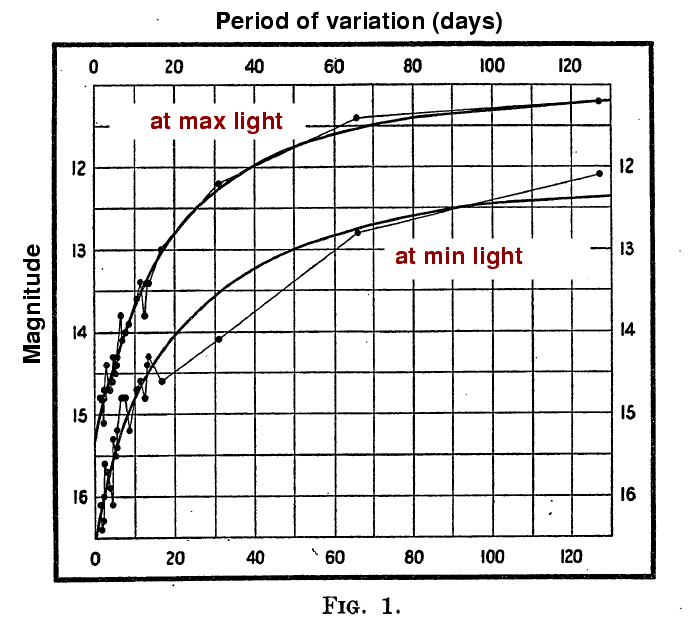
This figure taken from Leavitt and Pickering's original paper, published in 1912
 Copyright © Michael Richmond.
This work is licensed under a Creative Commons License.
Copyright © Michael Richmond.
This work is licensed under a Creative Commons License.
As mentioned last time, if conditions are just right within a certain region of a star's interior, the opacity of one layer of material can undergo large changes. When that happens to stars which are roughly Sun-like in mass, the result is a pulsating star of the RR Lyr class. In the much less common -- but much more interesting -- case of a massive star, the resulting variable star is called a delta Cepheid, or Cepheid for short.
Because they are more massive, Cepheids shine much more brightly than RR Lyr stars. The good news is that we can see them at great distances, allowing us to estimate distances to many other galaxies. The bad news is that the absolute magnitudes of Cepheids are not all the same, or even close to the same value; instead, the absolute magnitudes cover a wide range. In order to use them as distance indicators, we need a considerable number of measurements of their brightness, over periods of many days, or weeks, or even months.
The key to using Cepheids as distance indicators, as astronomer Henrietta Leavitt discovered long ago, is the connection between the period of a Cepheid variable star and its luminosity.

This figure taken from
Leavitt and Pickering's original paper, published in 1912
This period-luminosity relationship becomes even simpler if we take the base-10 logarithm of the luminosity.
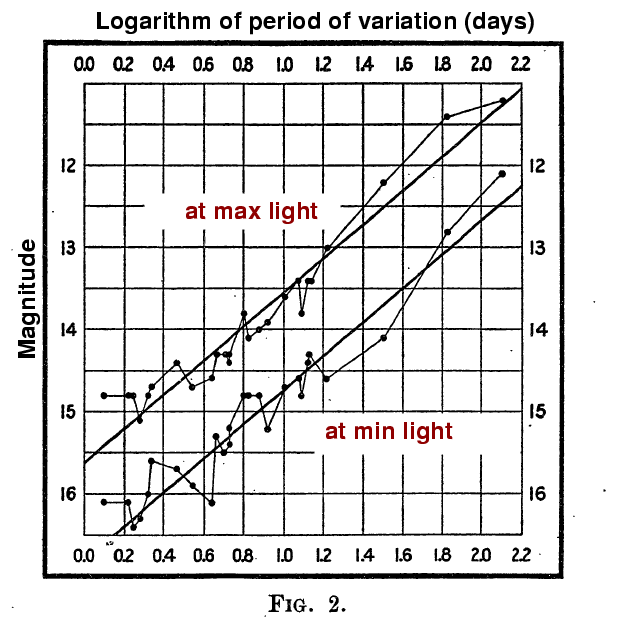
This figure taken from
Leavitt and Pickering's original paper, published in 1912
Now, it turns out that there are two populations of stars called "Cepheids", both of which pulse over periods of 1 to 100 days, but which have very different luminosities. I'm going to concentrate on the "classical" or Type I Cepheids, and ignore the Type II Cepheids, in the following discussion; if you want to learn more about the Type II variables, see the papers by by Gingold, MmSAI 56, 169 (1985) and by Wallerstein, PASP 114, 797 (2002) mentioned in the For more information section at the end of this webpage.
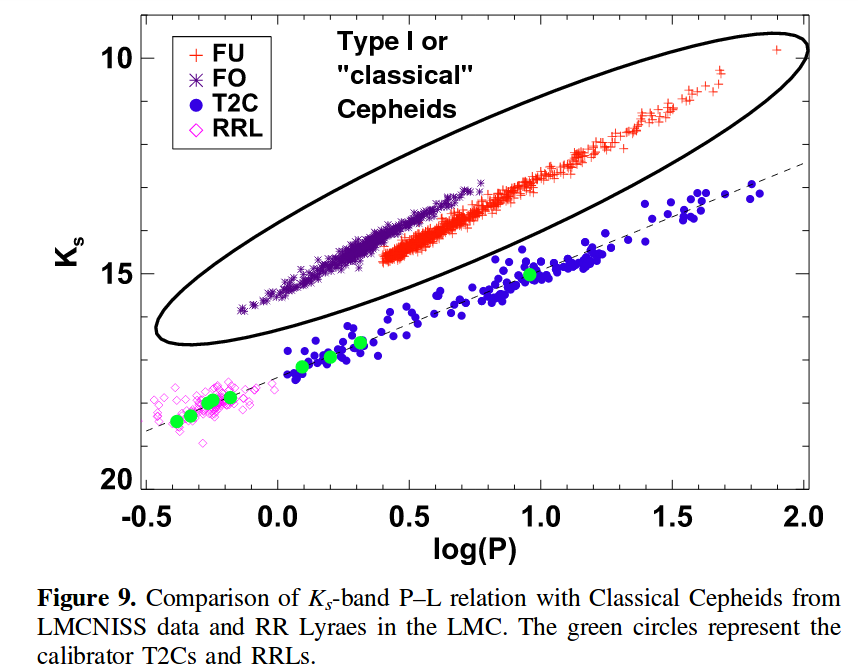
Modified from Figure 9 of
Bhardwaj et al., AJ 153, 154 (2017)
What sort of stars are classical Cepheids? They are relatively massive, and therefore relatively young, stars, which have just run out of hydrogen in their cores and so have evolved off the main sequence and into the red giant branch. However, as their core regions pass through several evolutionary stages, the stars evolve away from the giant region and make "blue loops" into the instability strip, where layers in their outer atmospheres become subject to the kappa instability discussed earlier.
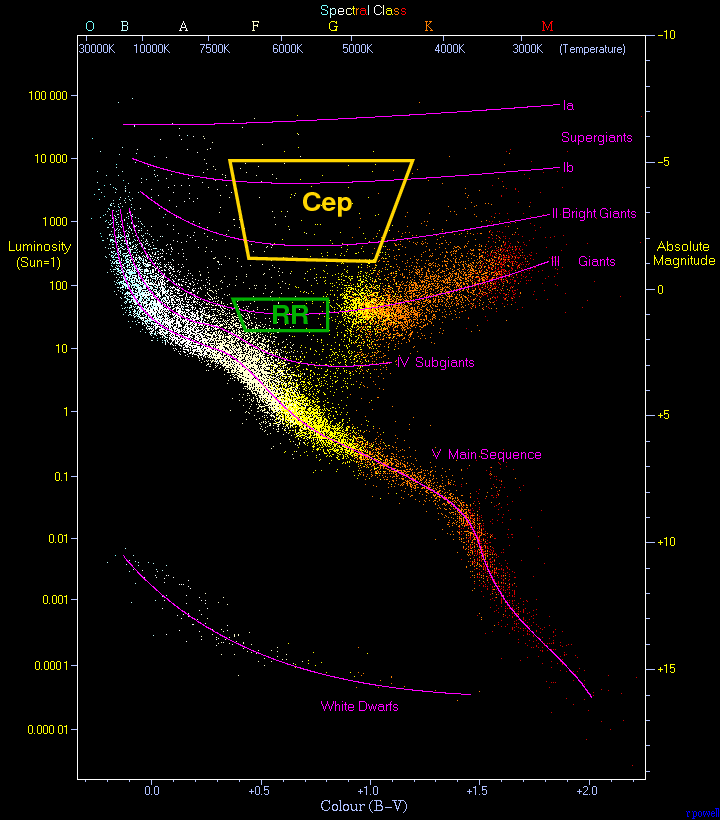
Background image of HR diagram courtesy of
www.anzwers.org
Let's look at a small sample of Cepheids in a cluster within the Large Magellanic Cloud. The figure below shows the location of the Cepheids in the HR diagram, and it shows evolutionary tracks for stars of several ages. The different colors represent models with different versions of convection in the stellar atmosphere. Note how the models first reach the red giant branch (RGB), then make a "blue loop" and pulse as Cepheids, before returning to the asymptotic giant branch (AGB). The models suggest that the stars which are currently Cepheids have masses of about 4.2 solar masses.
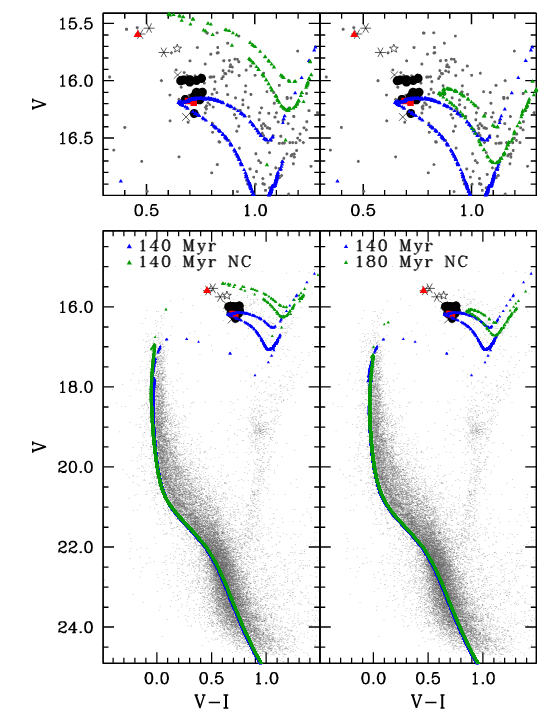
Figure 8 taken from
Musella et al., MNRAS 457, 3084 (2016)
Here's a closeup of the Cepheid region of the HR diagram for a larger set of Cepheids in the Small and Large Magellanic Clouds.
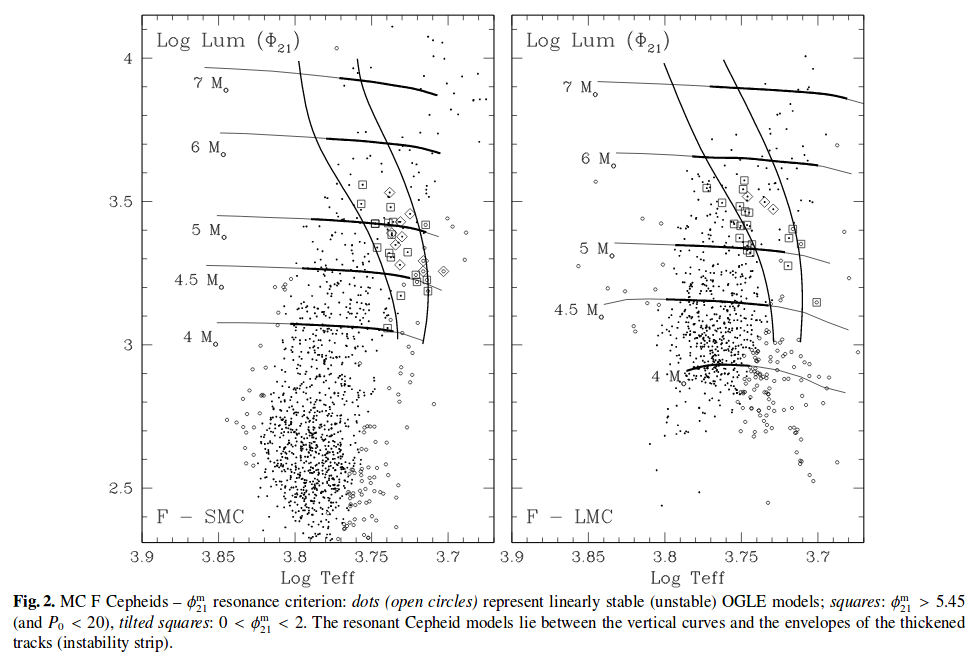
Figure 2 from
Buchler, Kollath, and Beaulieu, A&A 423, 643 (2004)
How can one use Cepheids to determine the distance to a cluster, or a galaxy? The basic procedure sounds pretty simple, but there are many complications in real life.
| Step | Complication(s) |
|---|---|
| Make repeated measurements of brightness of many stars | There can be hundreds or thousands of ordinary stars for each Cepheid |
| Identify those which have Cepheid-like light curves | Amplitude of variation is largest in blue, as shown in Fig 12 of Gaia Collaboration, arXiv:1705.00688 (2017), but extinction is most severe in blue |
| Measure the period P and apparent magnitude m of the Cepheids | Requires multiple epochs over many weeks or months to measure period properly |
| Use a period-luminosity (PL) or period-luminosity-color (PLC) relationship to determine the luminosity of each Cepheid | Requires multiple passbands of photometry to compute color; and spectroscopy to measure and correct for metallicity |
| Use the apparent magnitude and luminosity to calculate the distance | Must correct for extinction (easiest in infrared) and crowding (difficult in external galaxies) |
Well, let's skip over most of the complicated stuff and give this a try. We'll adopt a period-luminosity relationship from Gaia Collaboration, arXiv:1705:00688 (2017) (we will ignore the metallicity effects):

So, let's try to estimate the distance to a nice, nearby spiral galaxy.
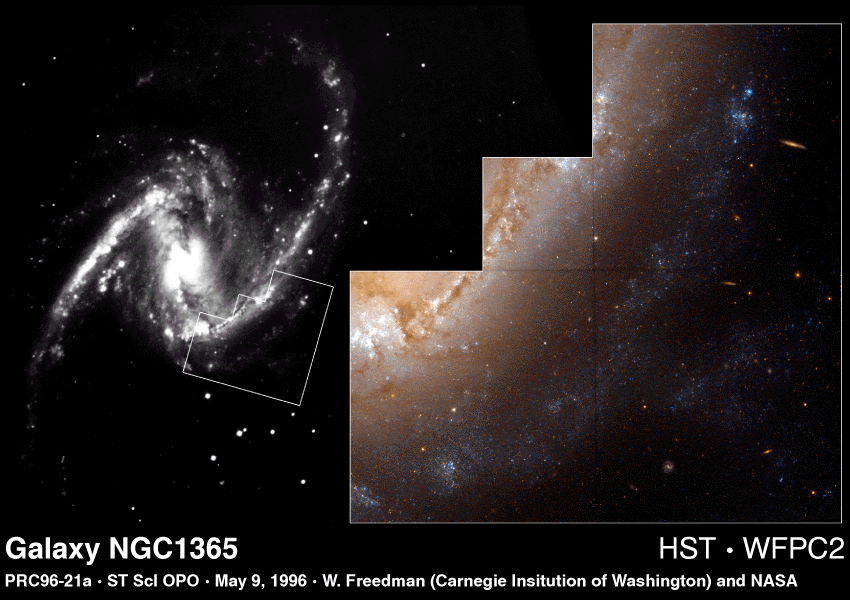
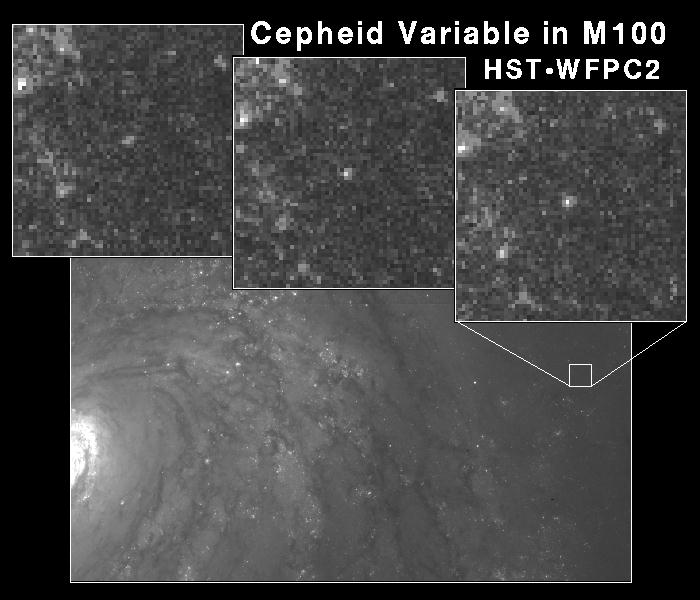
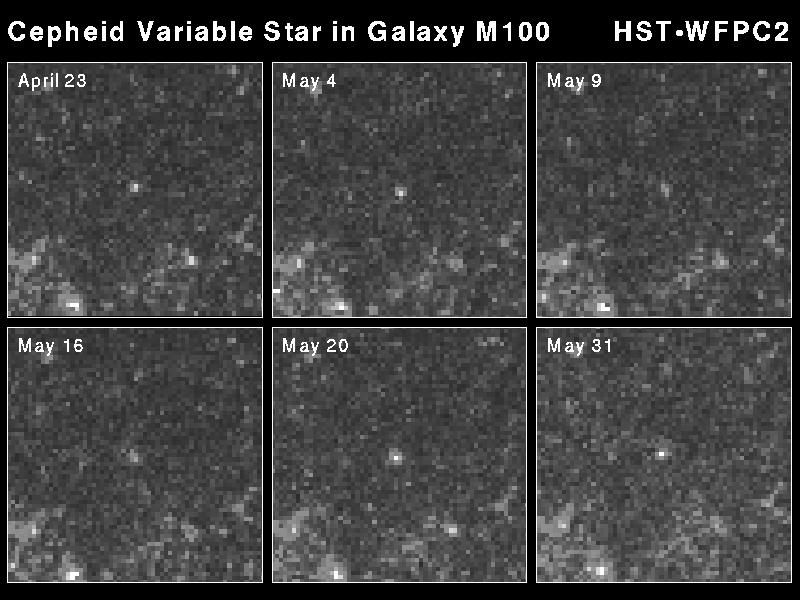
In the figure below, use the symbols marked with filled black circles, which are V-band measurements.
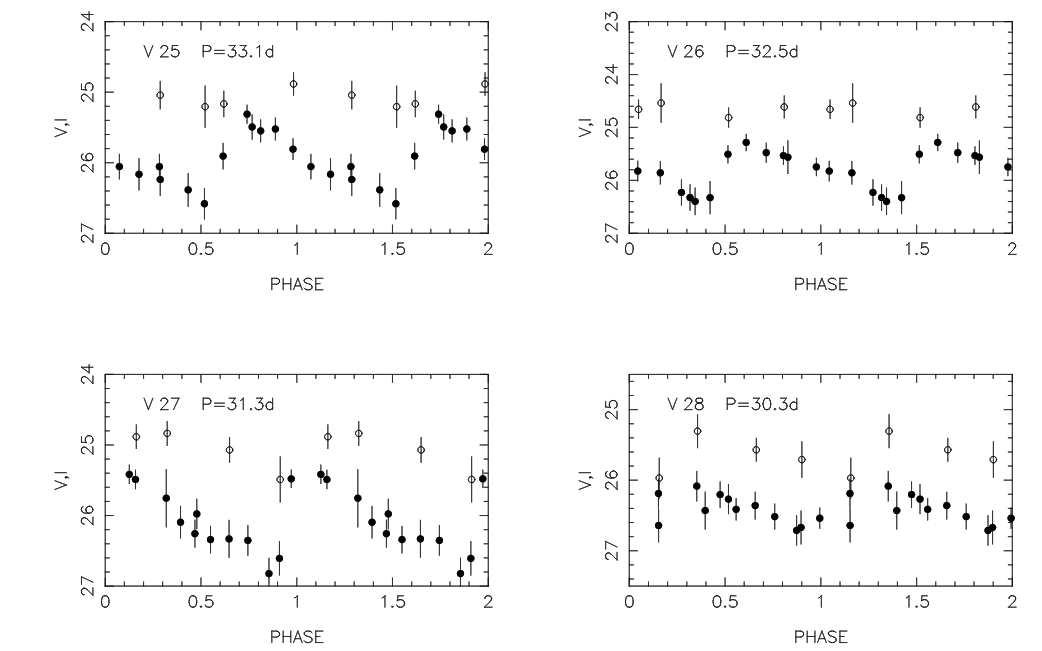
1. Pick one variable star. Measure its average V-band magnitude. 2. Use its period to determine its absolute magnitude. 3. Compute the distance modulus (m - M) 4. Compute the distance to this galaxy, in Mpc
How does you answer compare to that of the authors of the paper from which this data was taken?
Q: Was your distance smaller or larger than the authors' value? Q: What could explain that difference?
Let's go back and compare these two useful varieties of variable stars. Look again at their locations in the HR diagram:

Background image of HR diagram courtesy of
www.anzwers.org
The location of the stars in this diagram gives us strong hints about the differences between them. I'll summarize the important points for you.
| RR Lyr | classical Cepheids | |
|---|---|---|
| luminosity | less luminous: Mv ~ +0.6 | more luminous: Mv ~ -3 to -5 |
| mass | less massive: about 0.6 solar | more massive: 3 to 7 solar |
| age | old: approx 10 billion years | young: 50 to 600 million years |
| population | Pop II | Pop I |
| habitat | mostly halo (spirals and ellpticals) | disk (spirals) |
| useful range | Local Group (approx 1 Mpc) | Virgo and Coma? clusters (approx 30-100? Mpc) |
RR Lyrae stars are great for distance measurements within our Milky Way Galaxy, and to our nearest neighbors. Because they belong to the older, halo population, one can find them in just about all galaxies; moreover, one can look far away from bright star-forming regions and their associated clouds of gas and dust, making it relatively easy to measurement their brightness. But their relatively low luminosities mean that we can't measure them accurately very far beyond the Milky Way.
Cepheids, on the other hand, CAN be seen at great distances, at least as far as the Virgo Cluster and perhaps as far as Coma though the existing work seems incomplete. Using them in external galaxies requires quite a bit of hard work and some estimation, if one wants to make the proper metallicity corrections, since it's not possible to measure directly the composition of Cepheids in galaxies beyond the Local Group at the the current time. There are also issues involving the crowding of other stars into a photometric aperture when one measures Cepheids in other galaxies. Still, they provide a good way to add a rung to the distance ladder, well beyond our Local Group.
Q: If Cepheids have an absolute magnitude which is up to 6 magnitudes
brighter than RR Lyr, how much farther should we be able
to see them?
The Large Magellanic Cloud serves as an important step in the ladder, because it is close enough for us to use a number of different methods to determine its distance, yet far enough away that objects in it are (almost) at a single common distance. Astronomers have studied the RR Lyr and Cepheid variables in the LMC in great detail. In many cases, we have ASSUMED a distance to the LMC, and used that assumption to determine the absolute magnitudes of both RR Lyr and Cepheid stars. For example,
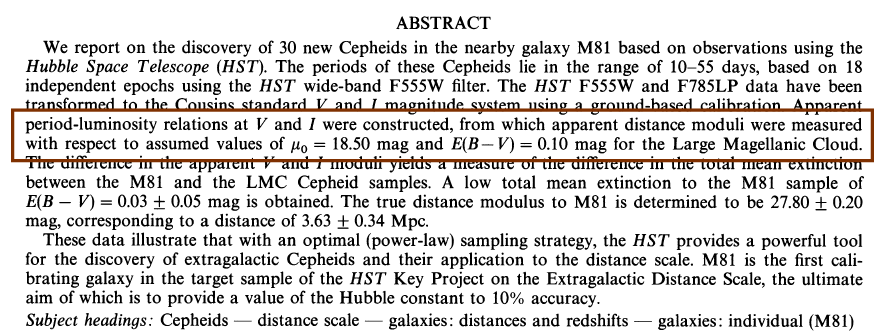
Abstract taken from
Freedman et al., ApJ 427, 628 (1994)
But -- but -- but -- when Gaia finishes its survey, we will finally have solid, direct trigonometric distances to many RR Lyr and Cepheids. That means we will
This is an exciting moment for cosmologists: the second rung of the distance ladder is about to be re-built, stronger than before. Preliminary results recently published in
suggest the current uncertainties in the distance to this stepping-stone into the larger universe. Note the good agreement with the distance derived via eclipsing binaries by Pietrzynski et al., Nature 495, 76 (2013), which is shown by the vertical line.
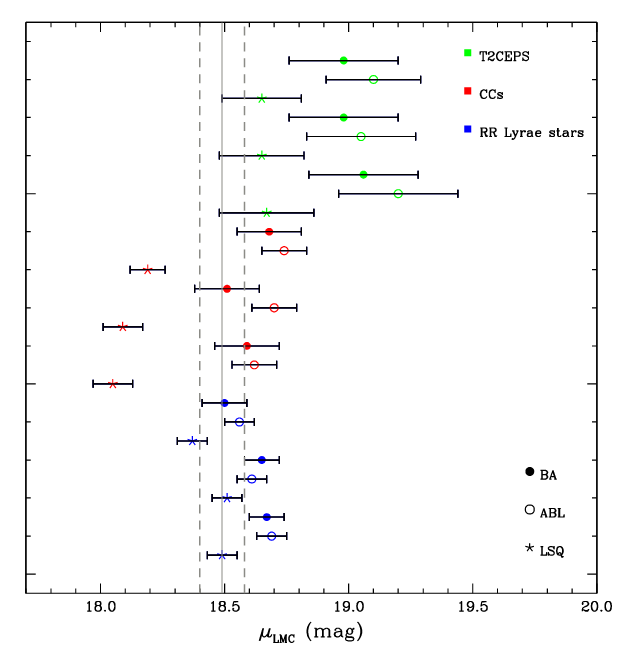
Figure 25 taken from
Gaia Collaboration, arXiv:1705.00688 (2017),
(the following added in 2025)
As Gaia releases better and better versions of its measurements, we can to determine the distances to both RR Lyr stars and Cepheids in our Milky Way Galaxy to higher and higher precision. That allows us to improve our calibration of the absolute magnitudes of both types of stars; and THAT means that distances based on these pulsating stars become more reliable.
How much has Gaia improved our knowledge of RR Lyr stars? Take a look at the graph below, which compares distances to individual RR Lyr stars -- including the uncertainties -- over the past few decades.

Taken from Figure 2 of
Clementini, G., IAUS 376, 115 (2024)
Gaia has improved our distances to Cepheids, too:

Taken from Figure 2 of
Clementini, G., IAUS 376, 115 (2024)
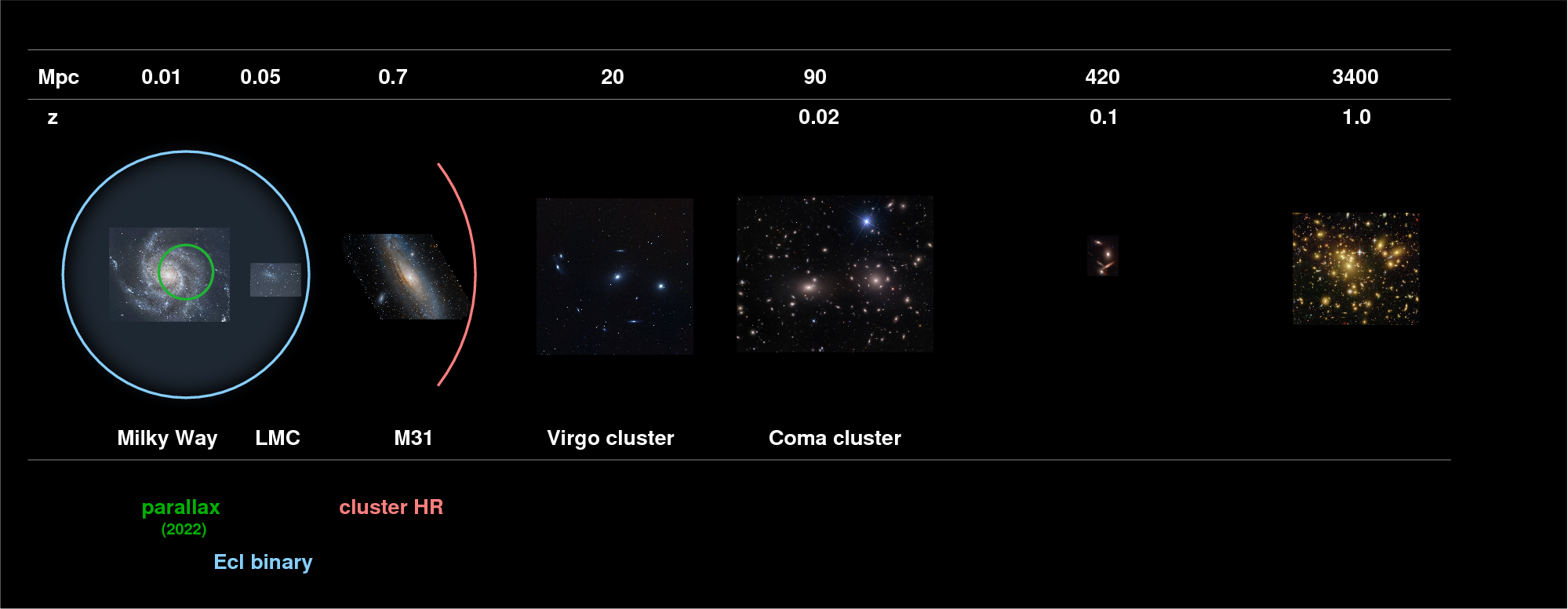
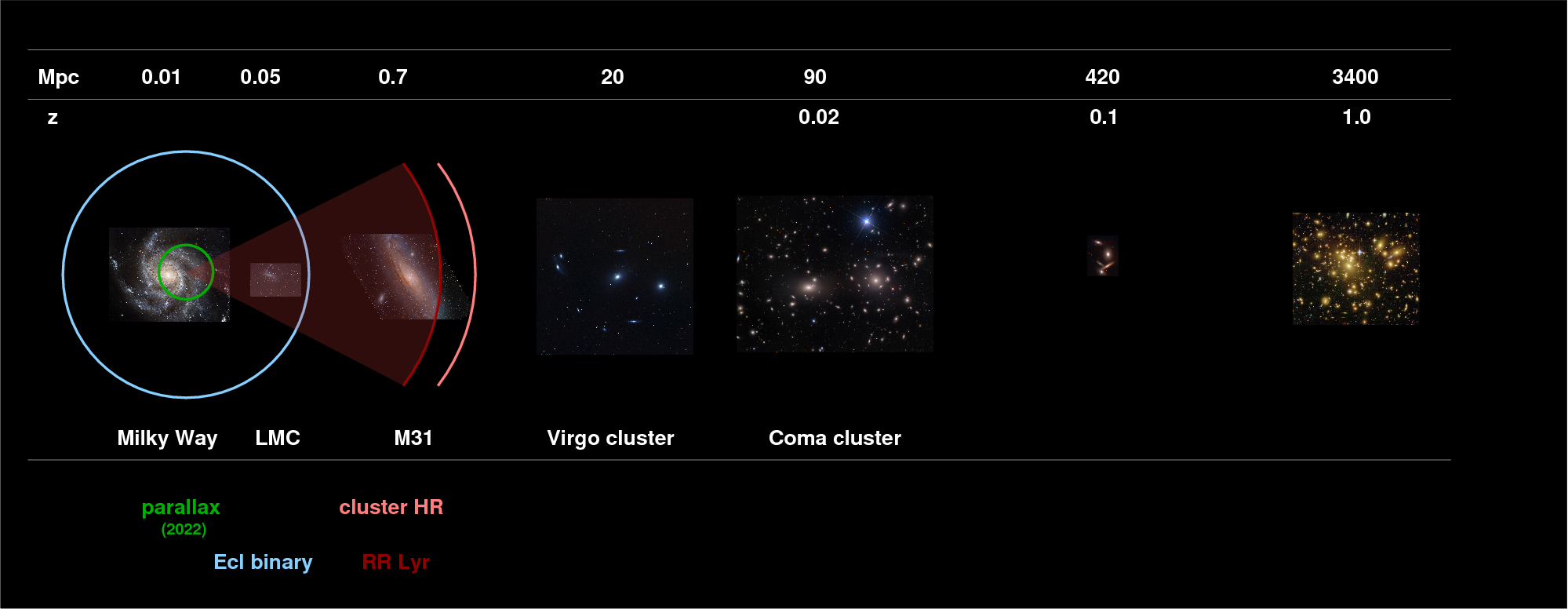
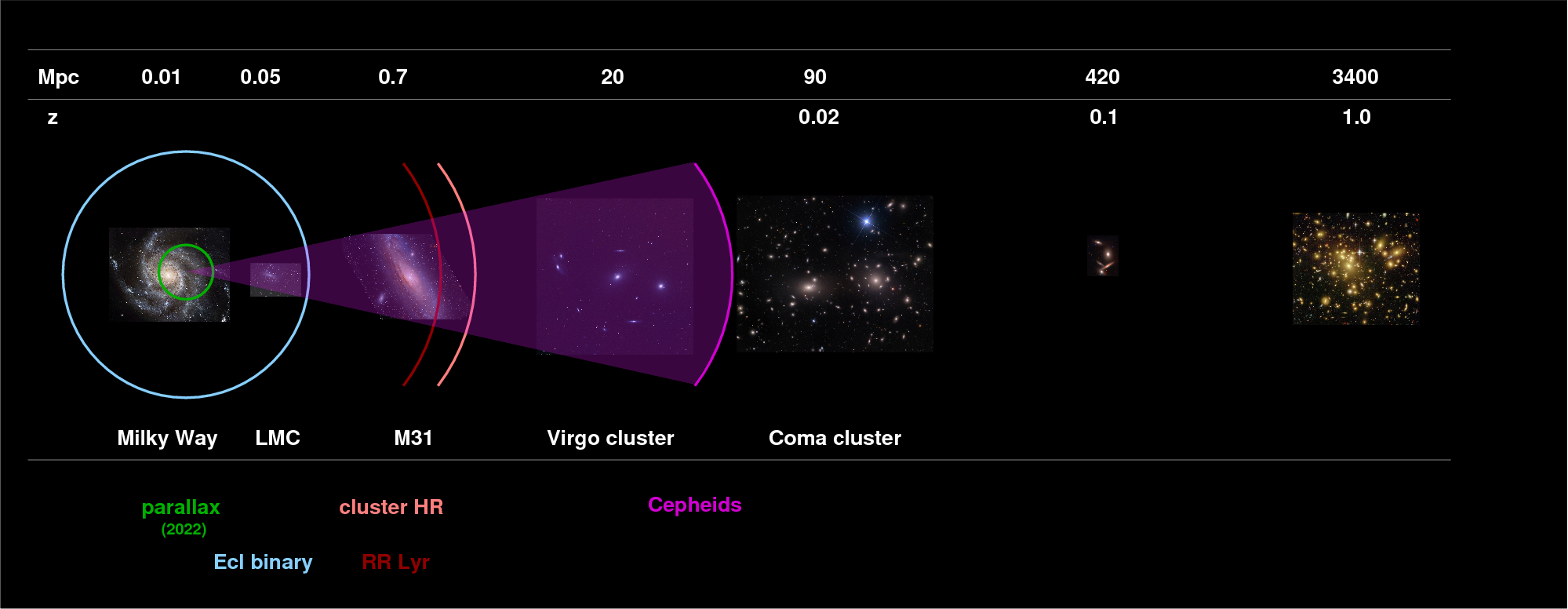
 Copyright © Michael Richmond.
This work is licensed under a Creative Commons License.
Copyright © Michael Richmond.
This work is licensed under a Creative Commons License.